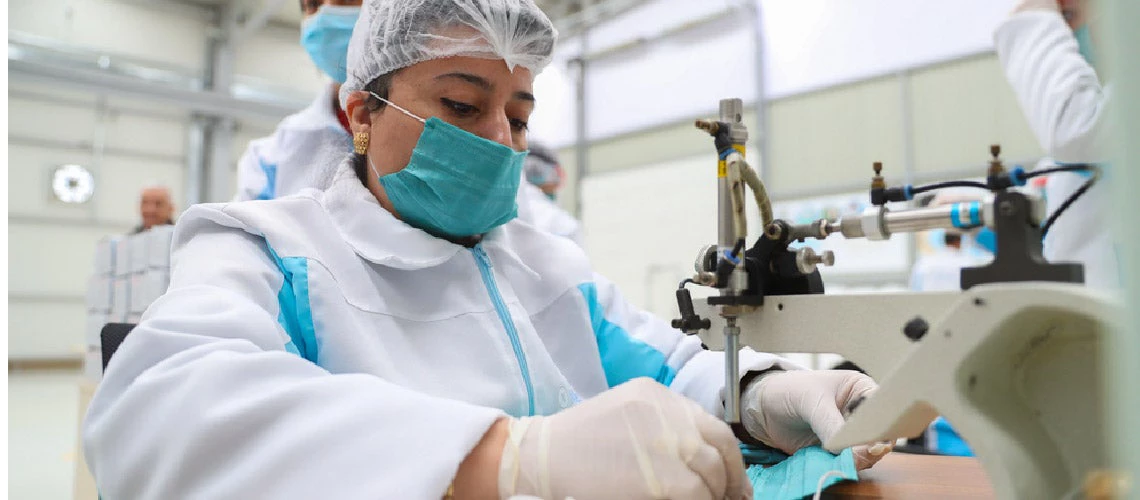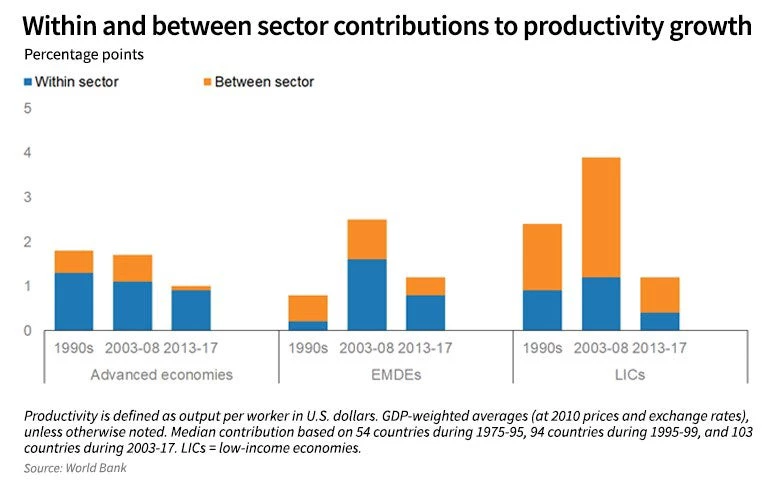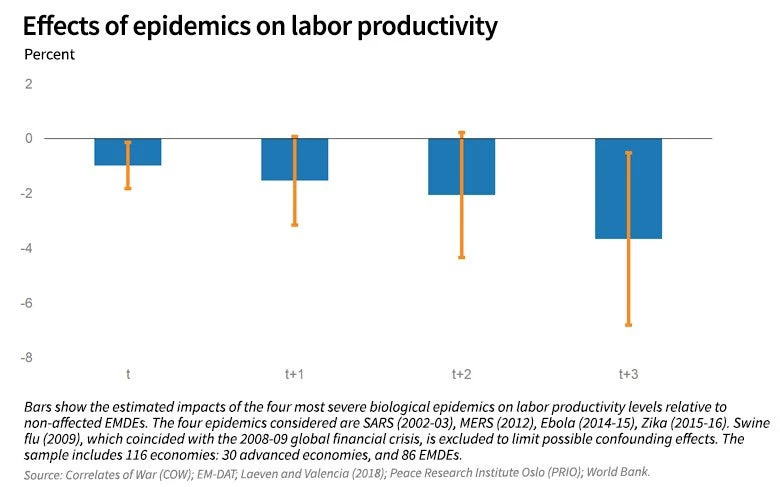 Photo by: Romanukraina/Shutterstock
Photo by: Romanukraina/Shutterstock
There has been a broad-based slowdown in labor productivity growth since the 2007-09 global financial crisis that is likely to be compounded by the effects of the recession triggered by the COVID-19 pandemic. The pandemic may leave lasting economic scars through multiple channels, including lower investment, erosion of human capital due to job destruction and loss of schooling, and a retreat from global trade and supply linkages. These setbacks are likely to further delay convergence of emerging market and developing economies (EMDEs) to advanced economy productivity levels and will have profound, and worrisome, implications for poverty alleviation efforts. To rekindle productivity growth, a comprehensive broad-based approach will be necessary.
1. The productivity slowdown since the 2007-2009 crisis has been steep and prolonged
The COVID-19 pandemic has plunged the global economy into its deepest recession since the Second World War. This follows the steepest, longest, and broadest multi-year slowdown in labor productivity following the 2007-09 global financial crisis.
2. The productivity slowdown is due to multiple factors
Since the global financial crisis, improvements in many key correlates of productivity growth have slowed or gone into reverse. Working-age population growth has decelerated, educational attainment has stabilized, and the pace of expansion into more diverse and complex forms of production has lost momentum as the growth of global value chains has stalled. At the sectoral level, labor reallocation to more productive sectors from less productive ones has also weakened since the global financial crisis. Mobility restrictions due to COVID-19 may slow the reallocation of workers to higher-productivity firms from lower-productivity ones. Steep income losses and disruptions to education could cause an erosion of human capital.
3. COVID-19 is only the latest in a series of shocks that have dampened productivity
Over the past decade, the global economy has been buffeted by a series of shocks of which COVID-19 is only the latest. Natural disasters, wars, and major economic disruptions such as financial crises and deep recessions tend to be accompanied by declines in labor productivity.
4. Effects of COVID-19 on productivity will likely be drawn out
In addition to the health crisis, the uncertainty about the duration of the COVID-19 pandemic will weigh on investment and hinder trade and foreign direct investment. Previous epidemics left lasting scars on labor productivity (causing a 4 percent cumulative decline after three years). COVID-19 will likely compound the erosion caused by an undercurrent of weakening fundamental drivers of productivity growth.
5.The productivity gap between developing and advanced economies may be harder to narrow
The pace of convergence of EMDEs has slowed since the global financial crisis. Output per worker in EMDEs remains less than one-fifth of that in advanced economies on average. In low-income countries (LICs), the corresponding figure is just one-fiftieth. EMDEs with a strong foundation of education provision, institutional strength, and more diverse production structures have had relatively faster convergence to advanced-economy productivity levels. However, countries seeking to replicate earlier successes, or continue along rapid convergence paths, face a range of headwinds, including a more challenging environment to gain market share in manufacturing production as well as to deepen global value chain integration.
6. Deceleration of Productivity Growth Will Impede Development Goals
The likely adverse impact of the pandemic on productivity is of concern because labor productivity growth is the main source of lasting per capita income growth, which is in turn the primary driver of poverty reduction. The broad-based productivity growth slowdown is likely to impede progress toward development goals, and the global recession triggered by COVID-19 may amplify many of these headwinds.
7. Policies can boost productivity
To rekindle productivity growth, a comprehensive approach is necessary to facilitate investment in physical and human capital; encourage reallocation of resources toward more productive sectors and enterprises; and foster firm capabilities to reinvigorate technology adoption and innovation.
The pandemic may encourage the adoption of new technologies and accelerate the automation of production. However, polices are needed to ensure these productivity gains are evenly distributed.
In addition, steps are needed to limit the damage of adverse events. Countries with ample fiscal space and transparent governance are better able to provide reconstruction effects, and to use it efficiently and in a timely manner as well as to support vulnerable sectors with policies that can boost long-term productivity growth. Well-designed policies and regulations concerning the prudent management of financial institutions, construction, and environmental protection can help reduce the likelihood and impact of adverse shocks.







Join the Conversation